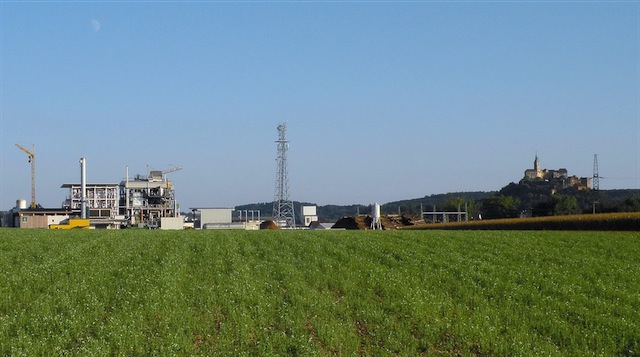A small town in the southeast of Austria is now thriving thanks to renewable energies generated by pioneering technology. A new plant which gasifies timber to produce not just heat for the district but also electricity and synthetic diesel fuel has been developed. The essential difference with other similar plants is the particularly low level of tar produced by the Güssing plant.
New formula for renewables revolutionises Güssing
- 13 January 2010
This was a dead-end town and now we're the centre of attention. It seems like every week we read about new jobs from renewable energy.
A discovery by Professor Herman Hofbauer at the Technical University in Vienna found that by injecting steam rather than air into the gasification chamber, biomass could be turned into gas with very little tar. Now at full capacity when all the gas is burned, the plant produces 14 000 megawatt hours of power a year. With 25% of the energy in the wood going into the mains and 55% becoming heat, the plant has an overall efficiency of 80%.
Breakthrough technology
Following a presentation by the Viennese scientist Hermann Hofbauer about a technology he had developed to make synthetic fuel from wood, the mayor of Güssing and an electrical engineer also from Güssing decided to ask Vienna's Technical University to build a pilot project.
The pair embarked on a massive fund-building crusade, getting grants and approvals from the EU, the Austrian government and the regional government. The result was a plant with two connected fluidised bed chambers, one for the gasification itself, the other for combustion. The breakthrough technology uses steam to separate carbon and hydrogen from scrap timber. The molecules are then recombined to make a form of natural gas.
Some of this gas is burned in the combustion chamber to provide heat for the gasification. The rest of the gas is cooled – the heat going into the district heating system – and cleaned. It can then be used in various ways. At present, it is being burned in a gas engine which powers an electrical generator, with the waste heat from that also going into the district heating system. However, the gas can also be used as the feedstock for the production of a synthetic diesel oil or sold, just as it comes, as a synthetic natural gas.
Profitable investment
The plant gets around 15 euro cent per kWh for its electricity. This is much less than the price, around 25 euro cent, being paid by domestic consumers in the area. It is estimated that this plant, together with another wood-fired heating system with a capacity of 42 MW, means that €18 million stays in the district each year that would otherwise have leaked out. This represents massive return on investment.
The availability of cheap heat (30% cheaper) has led to over 1 000 new jobs being created in and around the town, including 100 in a new office building on an industrial estate which houses the European Centre for Renewable Energy. This employs 12 people itself and the other people renting space in the building are mostly from companies or consultancies to do with renewable energy. One of the centre's activities is arranging visits for the increasing number of visitors who come to see what Güssing has done, an activity which itself creates employment in hotels and restaurants.
By making the switch from fossil fuels to renewables, the people of Güssing are now more than self-sufficient for electricity and heat.

